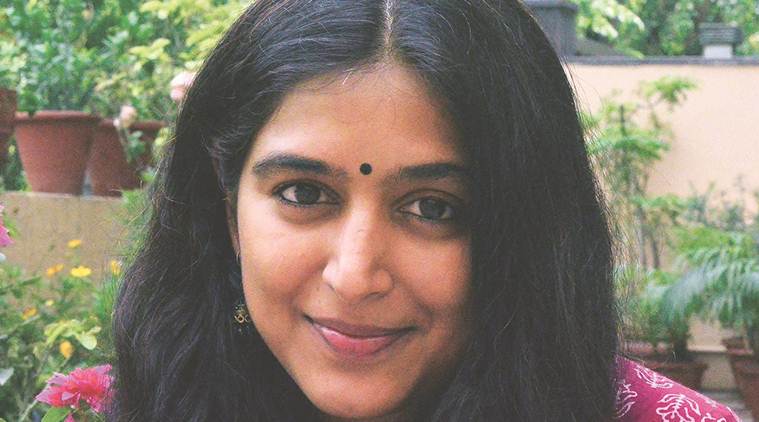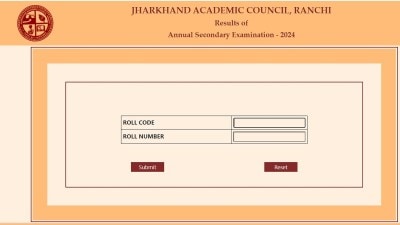- India
- International
We want people to participate in their city: Padmapriya Janakiraman
"The immediate objective is to create an interactive digital map which serves to be a one-point guide to Pune’s history and present while recording its cultural assets... It can be used by residents, tourists, researchers and enthusiasts”
 “A cultural map is best built in a participative fashion — the team from Sahapedia plays the role of facilitator in the exercise of map-making,” Padmapriya Janakiraman said.
“A cultural map is best built in a participative fashion — the team from Sahapedia plays the role of facilitator in the exercise of map-making,” Padmapriya Janakiraman said.
Sahapedia, one of India’s foremost arts organisations, has begun a cultural mapping project in Pune. Project head Padmapriya Janakiraman speaks with The Indian Express about the project’s origins and methodology as well as what it has yielded so far. Edited excerpts:
What are the aspects of Pune’s cultural heritage that you are looking at?
We are looking at visible or tangible heritage such as blue plaques, places of worship, museums, collectors, heritage sites and cinema theatres, among others, to intangible heritage such as food, dance, music, theatre, textiles, markets and natural heritage (from dragonflies to geology and sustainability). We are hoping to cover 23 themes and about 1,500 sites. The most important element of this exercise is that we want people to participate in their city — so the user of the application interested in natural heritage will not just know more about it but will also have the choice to select an organisation where one can volunteer their hours to protect the same.
How will people be able to access this information?
This will be an interactive bilingual (English and Marathi) free digital map accessible on mobile platforms, which can be used without logins and will have features like Build Your Route or Do-It-Yourself walks. We hope to make the archive dynamic by allowing users to key in information into the application.
How was the project to map Pune’s cultural heritage born?

Sahapedia emerged from the founder Dr Sudha Gopalakrishnan’s past work experience in the Manuscript Mission for over a decade and the deep need to create an open archives movement where all kinds of people and knowledge-holders can contribute to the rich cultural past and present of the country. The Pune cultural mapping exercise finds its seed from this idea. Also, efforts of our past projects such as the three-year Chhattisgarh intangible and natural heritage documentation with the Govt of Chhattisgarh, the Fort Kochi mapping in collaboration with the Kochi Biennale have all led to a more extensive mapping project like what we are attempting in Pune. The immediate objective is to create an interactive digital map which serves to be a one-point guide to Pune’s history and present while recording its cultural assets… It can be used by residents, tourists, researchers, policymakers and enthusiasts both to understand the city and to participate in its cultural landscape.
What is your methodology for documenting or archiving this information?
A cultural map is best built in a participative fashion — the team from Sahapedia plays the role of facilitator in the exercise of map-making. We are not the ones actually doing any documentation, that is done by the city and its people. The themes were selected through intense conversations over months with various experts and residents. The knowledge is being built by practitioners, researchers, past archives, students and volunteers, and we hope to include resident welfare associations, labour unions, auto drivers, NGOs and shopkeepers as knowledge contributors to this map. As much as possible, it is our effort to build the map as representatively as possible, only then will there be a reason for the city and its people to own it.
It has been several weeks since you began. What material have you come across and what do they reveal about the city’s evolution?
The material we are coming across is extremely diverse. Not many know that Pune has 45 museums on very unique themes. Or that it has a deep connection with the Indian Constitution. Our on-ground collaborators have dug out a gold mine of information that will soon be available at everyone’s fingertips. While putting this project together, the two things that really stood out are the deep diversity of this city and the extraordinary emphasis to record its cultural knowledge across generations.
Who are the people in the team that is mapping the city’s cultural heritage?
The core project team is a small group of three people with very diverse skills and backgrounds, two of whom are based in Pune running the project. The core team of our organisation i.e. the founder, the director of projects, outreach, legal and technology team also play an integral role. But for us at Sahapedia, the real mapping team is the set of 200+ credible collaborators and knowledge-holders, 30+ interns so far and the ever-growing number of people interested in participating and contributing to an exercise like this. It would have been impossible to undertake this without our project partner Tata Technologies — that their CSR believes in this initiative is important not just for Sahapedia but for Pune city and its cultural practitioners.
Click here to join Express Pune WhatsApp channel and get a curated list of our stories
Apr 19: Latest News
- 01
- 02
- 03
- 04
- 05






































